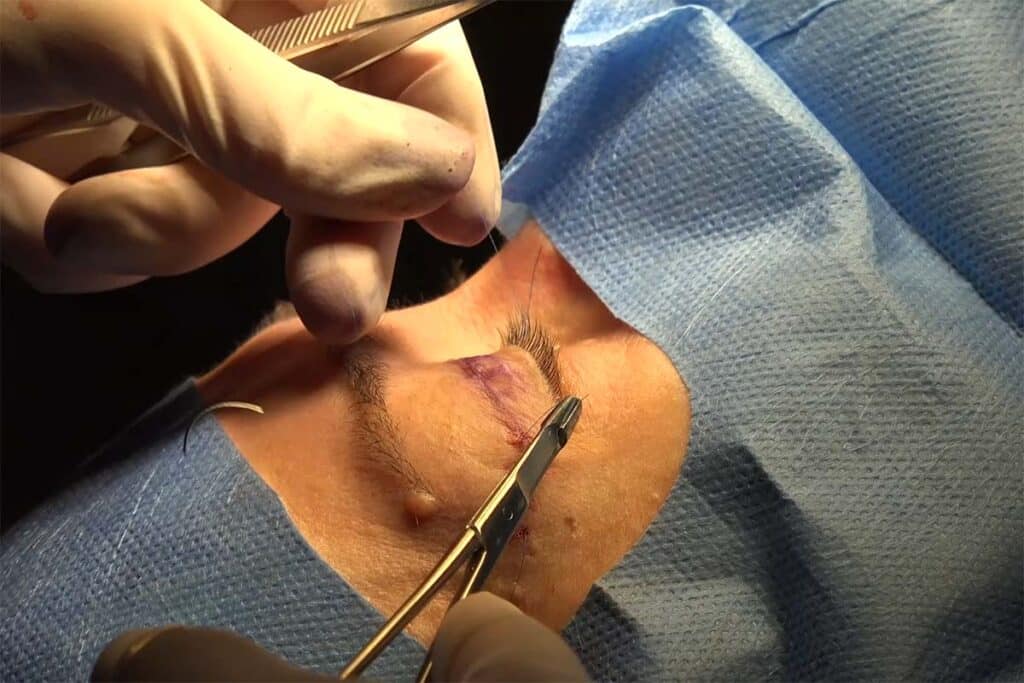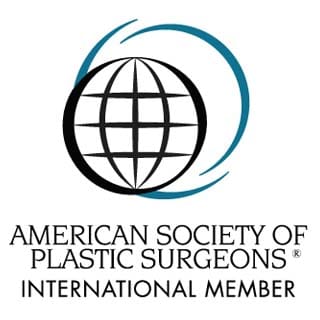
Even though they are small, your eyelids are an important part of your body. They blink continuously, spreading tears and moisturizing the eyes.
The normal position of the upper eyelids, with an open gaze, is at the level of the cornea or the iris. However, there are some cases where the upper eyelid falls down and cover the eye. The condition is known as droopy eyelids or ptosis. The droopiness can be minor and hardly noticeable or it can be severe and affect normal vision.
Ptosis can be caused by a variety of factors. Furthermore, the condition can be congenital or acquired, and it can affect one or both eyes. The droopy eyelid can have a negative impact on your appearance and self-esteem. In more severe cases, it can also cause eye strain, vision problems, and a condition known as lazy eye.
Ptosis surgery is one of the most successful ways of treating a droopy eyelid. It is typically a simple outpatient procedure performed under local anaesthesia. The majority of patients recover quickly and easily.
Here, you can learn more about what to expect after undergoing ptosis surgery. We will also give you some tips on how to have a quicker and easier healing process.

Most patients are able to return to work one week following their ptosis surgery. After this time, most of the swelling and bruising should subside and you should feel confident doing many activities. However, the complete healing from the operation may take longer, up to three months. During this time, it is best to stay away from heavy lifting and other strenuous activities. You will also need to make sure to protect your eyes from the sunlight and other irritants.
Although ptosis repair is a relatively simple procedure, it is still surgery. There will be incisions on your eyelids and they will need time to heal. As we mentioned above, it may take up to three months to completely recover from your upper eyelid surgery (sometimes confused with double eyelid surgery).
Here, we will give you information on what to expect during your healing, day by day. However, keep in mind that each patient is unique, so the recovery process and timeline may differ slightly for everyone.
The ptosis repair procedure can take anywhere between 60 to 90 minutes, depending on the technique used and whether one or both eyelids are corrected. Right after the surgery, you will be applying eye drops or thick ointment, which will help keep the area moisturized. As a result, you can experience blurry vision for a short period of time.
Ptosis surgery usually doesn't require a hospital stay, so you can go home on the same day. Please note, that you will be not able to drive, so make sure that you arrange for someone to do so for you.
During the first 24 hours, you will be instructed to wear a padded bandage. This will help protect the surgical site and minimize swelling. You can also expect to experience discomfort and pain. In most cases, it is minor and easily tolerable. However, if you need you can take painkillers.
During the first few days following your ptosis surgery, you can expect to have some swelling and bruising. These are common side effects which are associated with almost any invasive procedure. You can also experience discomfort in the eyelids, they may feel tight, itchy and dry. Your vision may still be not clear and you may also experience light sensitivity.
These side reactions might be a little bit unpleasant and interfere with your daily routines. However, you shouldn't worry because they will gradually disappear within the first week. In case you experience severe pain, bleeding or other more serious complications be sure to contact your doctor right away.
During the first few days, it is essential that you take a good rest and allow your body to heal. Make sure you stick to your doctor's instructions so that you have an easy and fast recovery. Do not do any exercise or vigorous work. Also, be sure to protect the incision site when taking a shower.
You should feel much better one week following the ptosis surgery. You may still have some residual bruising and swelling, but they will be much less noticeable than at first. Lifting the droopy eyelids up and down should also become easier. Most patients feel confident to come back to work after one week.
However, despite you may feel better, you should stay away from a heavy job and vigorous activities until your doctor says it is okay to do them. During your follow-up appointments, you can discuss this with your eye surgeon.
Within 3 months you should fully recover from the ptosis correction operation. You should be able to exercise and do manual labour. After this time, it is usually safe to wear contact lenses and make-up. However, before taking any of these actions make sure you have the approval of your oculoplastic surgeon.
Here are some side effects that you can experience while recovering from your eye surgery.
In case you experience more serious complications such as very sharp pain, excessive bleeding or vision loss then be sure to immediately contact your eye surgeon.
Once your upper eyelid procedure is done, the surgeon will give you aftercare instructions that you need to follow precisely. This will help you have a smoother recovery as well as achieve good outcomes.
Here are some general recommendations on how to take care of you while healing from your eye surgery.
Always consult your surgeon if you are unsure whether a particular activity is safe or not.
There are different techniques that might be used to correct ptosis or droopy eyelids. The surgeon will consider several factors when deciding which approach is best for you. These include the severity of the condition, the strength of the muscle that lifts the eyelid (the levator muscle), and whether there is excess skin on your eyelids.
For children with congenital ptosis (ptosis that is present at birth), the doctor will consider the child's age, the height of the eyelid crease, and other factors.
This is one of the most common techniques used to treat droopy eyelids. As a part of this procedure, the surgeon makes a tiny cut in the skin and then repositions the levator muscle by stitching it to the tarsus (connective tissue in the lids).
If you are only interested in cosmetic eyelid surgery, you may want to consider the external approach. The procedure will help you achieve an elevated eyelid position and a better appearance.
This surgical technique includes turning the eyelid inside out and shortening the muscles of the eyelid. The incisions are made inside the lids meaning that the scarring is not visible. The doctor may shorten either the levator muscle or Mueller's muscle depending on how much of the eyelid needs to be lifted.
Many surgeons use general anaesthesia to perform this surgical approach.
This approach is generally recommended for patients with poor muscle function. The technique involves attaching the upper eyelid to the frontalis muscle, which is located just above the eyebrows, with a silicone rod that passes through the eyelid and underneath the skin. As a result of connecting the eyelid to the frontalis muscle with this rod, the forehead muscles are enabled to elevate the eyelid.
The sling technique is commonly used to treat children with congenital ptosis or patients with drooping eyelids as a result of a medical condition.

Dr. Shenthilkumar Naidu (Dr. Shens) is a Ministry of Health accredited Consultatn Plastic Surgeon with extensive expertise in cosmetic and reconstructive surgery. He is renowned for his advanced techniques in body contouring and aesthetic enhancements. For more information, visit Shens Clinic.
Monday – Friday: 09:00am – 06:00pm
Saturday: 09:00am – 02:00pm
Sun and PH: Closed
(Strictly by appointment only)

Copyright ⓒ Shens Clinic | Privacy Policy | Terms and Conditions .